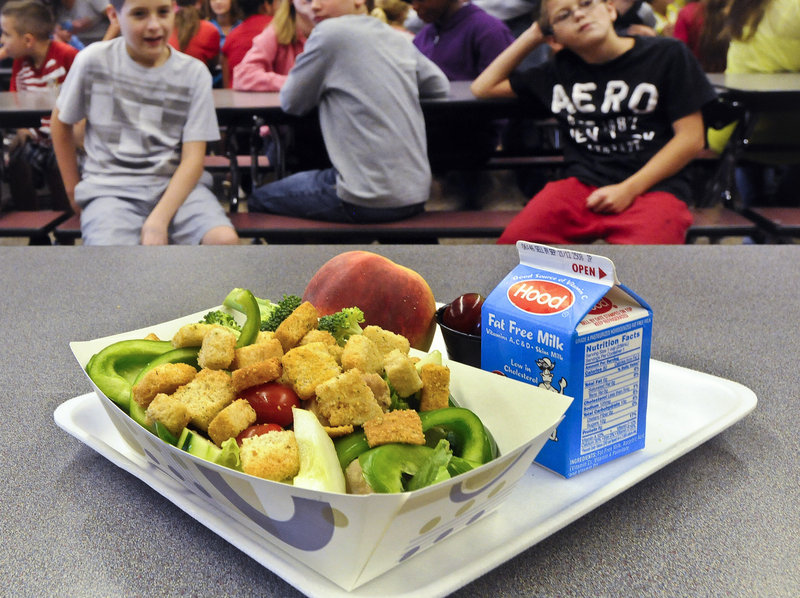After just one year, some schools around the country are dropping out of the healthier new federal lunch program, complaining that so many students turned up their noses at meals packed with whole grains, fruits and vegetables that the cafeterias were losing money.
Federal officials say they don’t have exact numbers but have seen isolated reports of schools cutting ties with the $11 billion National School Lunch Program, which reimburses schools for meals served and gives them access to lower-priced food.
Districts that rejected the program say the reimbursement was not enough to offset losses from students who began avoiding the lunch line and bringing food from home or, in some cases, going hungry.
“Some of the stuff we had to offer, they wouldn’t eat,” said Catlin, Ill., Superintendent Gary Lewis, whose district saw a 10 to 12 percent drop in lunch sales, translating to $30,000 lost under the program last year.
“So you sit there and watch the kids, and you know they’re hungry at the end of the day, and that led to some behavior and some lack of attentiveness.”
In upstate New York, a few districts have quit the program, including the Schenectady-area Burnt Hills Ballston Lake system, whose five lunchrooms ended the year $100,000 in the red.
Near Albany, Voorheesville Superintendent Teresa Thayer Snyder said her district lost $30,000 in the first three months. The program didn’t even make it through the school year after students repeatedly complained about the small portions and apples and pears went from the tray to the trash untouched.
Districts that leave the program are free to develop their own guidelines. Voorheesville’s chef began serving such dishes as salad topped with flank steak and crumbled cheese, pasta with chicken and mushrooms, and a panini with chicken, red peppers and cheese.
In Catlin, soups and fish sticks will return to the menu this year, and the hamburger lunch will come with yogurt and a banana – not one or the other, like last year.
Nationally, about 31 million students participated in the guidelines that took effect last fall under the 2010 Healthy, Hunger-Free Kids Act.
Dr. Janey Thornton, deputy undersecretary for USDA’s Food, Nutrition and Consumer Services, which oversees the program, said she is aware of reports of districts quitting but is still optimistic about the program’s long-term prospects. “Many of these children have never seen or tasted some of the fruits and vegetables that are being served before, and it takes a while to adapt and learn,” she said.
The School Nutrition Association found that 1 percent of 521 district nutrition directors surveyed over the summer planned to drop out of the program in the 2013-14 school year and about 3 percent were considering the move.
Not every district can afford to quit. The National School Lunch Program provides cash reimbursements for each meal served: about $2.50 to $3 for free and reduced-priced meals and about 30 cents for full-price meals. That takes the option of quitting off the table for schools with large numbers of poor youngsters.
Send questions/comments to the editors.



Success. Please wait for the page to reload. If the page does not reload within 5 seconds, please refresh the page.
Enter your email and password to access comments.
Hi, to comment on stories you must . This profile is in addition to your subscription and website login.
Already have a commenting profile? .
Invalid username/password.
Please check your email to confirm and complete your registration.
Only subscribers are eligible to post comments. Please subscribe or login first for digital access. Here’s why.
Use the form below to reset your password. When you've submitted your account email, we will send an email with a reset code.